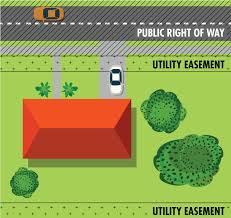To read our previous article on what is an easement, please click here.
There are a number of ways that an easement can be removed, including:
a) by agreement;
b) by abandonment;
c) by alterations made to the dominant tenement;
d) by unity of estates, and
e) by statute.
 Removal of Easement by Agreement
Removal of Easement by Agreement
A registered proprietor may make an application to the Land Titles Office in an approved form for the deletion from the register of an easement in whole or in part, where it has been abandoned or extinguished.
For the application to be approved by the Registrar of Titles, evidence must be provided in support of the application. A Deed of Abandonment, a statutory declaration from the application, statutory declarations from independent witnesses, proof of non-use, council’s consent where the easement is an easement of way and the consent of the mortgagee and/or caveator of the dominant land, are all evidence that the easement has been abandoned.
Abandonment
Abandoning an easement is reliant on the factual circumstances surrounding each case. If the owner of the dominant tenement makes it clear that neither they, nor their successors in title will make use of the easement, then it may be considered an abandoned easement. However, inferring abandonment is very difficult to establish. Case law provides that an easement noted on a certificate of title remains enforceable by the dominant owner, even though at common law it would be held to have been abandoned. As such, the easement will remain effective until it is removed from the register as a result of a successful application under section 73 of the Transfer of Land 1958 (Vic).
Alterations to the Dominant Tenement
If the owner of the dominant tenement changes the use of an easement that increases the burden on the servient tenement, this can operate to extinguish the easement. The usual remedy for increase burden on an easement involves obtaining an injunction or arguing that the actions of the owner of the dominant tenement amount to a nuisance due to the use of the easement in such a manner.
Unity of Estates
Easement can be extinguished at common law if the same owner acquires both possession of, and title to, the dominant and servient estates.
Statute
Easements can be removed under section 23 of the Subdivision Act 1988 (Vic) by a registered plan in accordance with a planning scheme or a permit. Section 60 of the Planning and Environment Act 1987 (Vic) sets out the matters that must be taken into account when the relevant authority is deciding whether to grant a permit.
If the relevant authority refuses to issue a planning permit allowing the removal of an easement, the matter can be referred to VCAT. VCAT will consider the need for the continued existence of the easement, material detriment to the owner of the benefiting land and the planning outcome.
For further information on removing easements, please contact us on 5303 0281 or at info@centralhighlandsconveyancing.com.au.
The information on this website is of a general nature only. It is not, nor is it intended to be legal advice. You should consult a lawyer for individual advice about your particular circumstances.
Liability limited by a scheme approved under Professional Standards Legislation.
Click here to go back to Publications.
